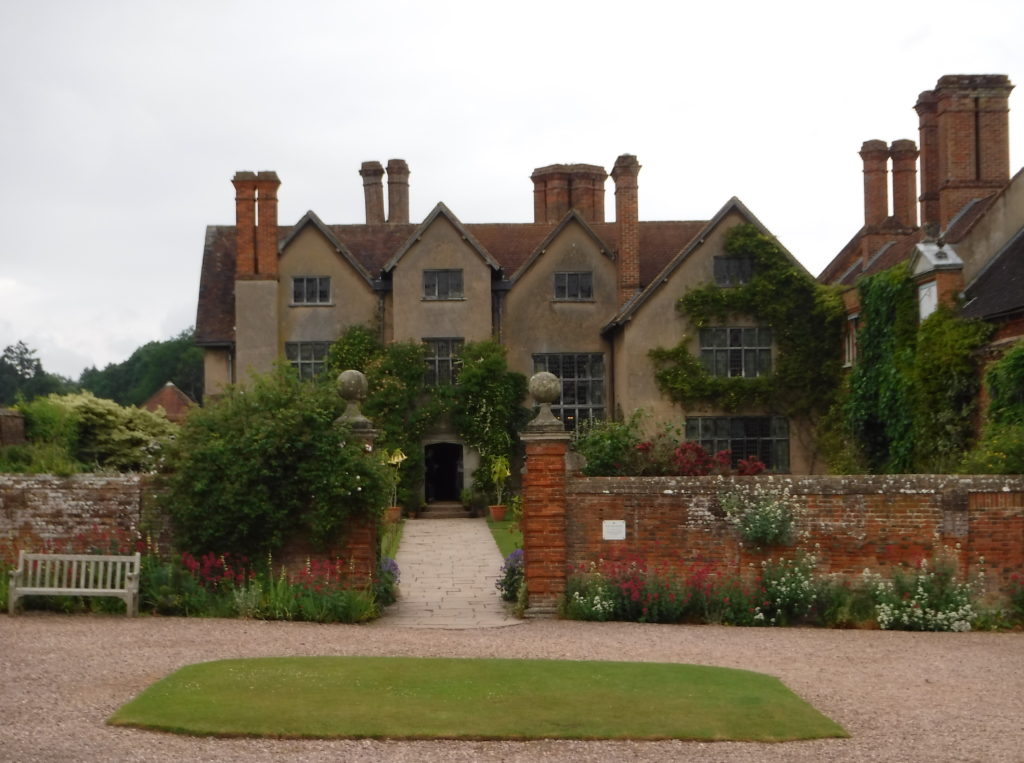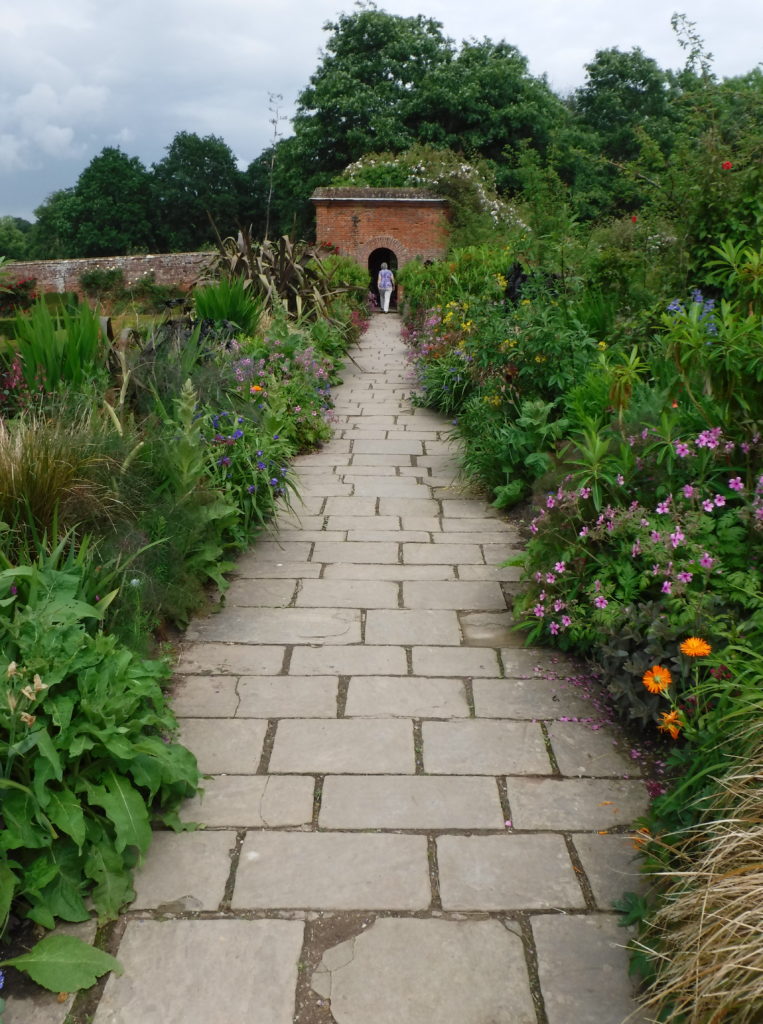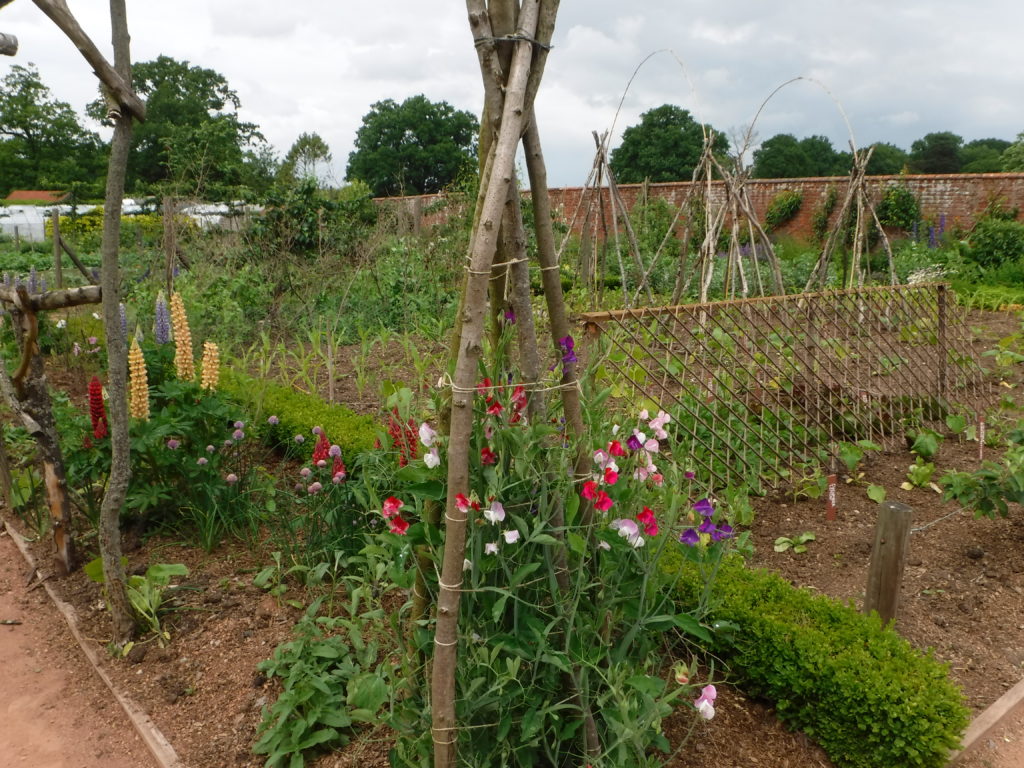Warp Speed
“Warping” is the process of pulling a ship from one place to another by using ropes rather than an engine or sails, so that when a ship is traveling at warp speed it is actually going very slowly. We moved the boat less than a mile today (thankfully using the engine, not warping), but it was all uphill, a total of nine locks. Even with the assistance of one of the Canal and River Trust’s wonderful volunteer lock keepers that still took about an hour and a half. I think that counts as warp speed. It started to drizzle by the sixth lock, and the forecast did not look good, so when we hit a stretch of wooded towpath we moored up for a hot chocolate (me) and a cup of tea (Paula).
After lunch the weather brightened up a bit so we decided to visit a local National Trust property, Packwood House.

This was a Tudor farmhouse which had been updated and modernized up to Victorian times, but in the 1920s it was purchased by the Ash family, successful Birmingham industrialists. When Graham Baron Ash inherited the family zinc plating business, he sold it, and spent the money turning the house back into a Tudor manor. His was rich enough to do this with genuine Tudor and Jacobean tapestries, furniture, and paneling. Incidentally, Baron was his middle name, like Sacha Baron Cohen, but he used to sign himself “Graham, Baron Ash” so that is sounded like a title.
Here’s the 15th Century cow barn that Ash converted into a great hall.

It is one of the few 15th Century cow barns in Western Warwickshire with a sprung dance floor. I think the guide was showing Paula his kangaroo impersonation. The fireplace over on the right came from an inn in Stratford, so Shakespeare may have sat in front of the fireplace, though probably before it was moved to the cow barn.
Once he had done it up, Ash seems to have lost interest in the house. He gave it to the National Trust in 1941, and spent the last four decades of his life living in a rented castle. He never married and my gaydar is going beepity-beep beep-beep, but there doesn’t seem to be any contemporary evidence that he ever acted on his inclinations. It’s not that Tolkien intended Bilbo Baggins to be gay. It’s just that the “confirmed bachelors” he would have known and based the character on were gay.
The house, though amusing enough, was nothing compared with the gardens: a kitchen garden, a formal garden, and a deeply disturbing collection of sinister topiary, said to resemble the Sermon on the Mount, but in fact more like the vegetable monsters from a low budget SF movie, if such a thing exists any more. Say, Godzilla vs. The Triffids?

Here we see a couple of puny mortals about to be crushed by treehenge.

Here’s Paula auditioning for the role of Godzilla.

The formal garden was just the place for an Agatha Christie murder mystery. There is a summer house in every corner for the secret lovers to rendezvous…

a sunken lily pond for the corpse to float in…

hiding places galore…

and prize irises for the village fete subplot.

All it really needs it the model train layout to dispose of the murder weapon, and a sinister Portuguese gardener who is far too suspicious to be guilty. I kept expecting to see Miss Marple lurking by the ornamental artichokes…

poised to dispense scones and a devastating critique of human nature based on living in a small village where at least five percent of the population are calculating killers.
Here’s the kitchen garden.

There is nothing sinister about it at all, which was quite disappointing after the other two. Paula did manage to find a gardener and admire the sweet peas so much that he gave her a bunch.
4 thoughts on “Warp Speed”
Yorkshire gold I presume! Paula. XX tony
Right you are, sir!
OK, I’ll bite: exactly how is topiary said to resemble the Sermon on the Mount, considering that the conventional genus of the former is ‘shrub’ and that of the latter is, well, ‘sermon’ or ‘recruitment pitch’?
There is a mound on one end with a big tree on it, then four large trees lined up representing the four evangelists, then a bunch of lower lurching forms representing the listening crowd. There’s also a centuries old hedge that looks like a great intestine, and a topiary summer house with a bench where you can go for a quiet snog, but I don’t think those have any biblical relevance. Another legend says that in Victorian times a visitor asked one of the gardeners what the topiary meant, and he made up the whole sermon on the mount thing on the spot, in the hope of a sixpenny tip.